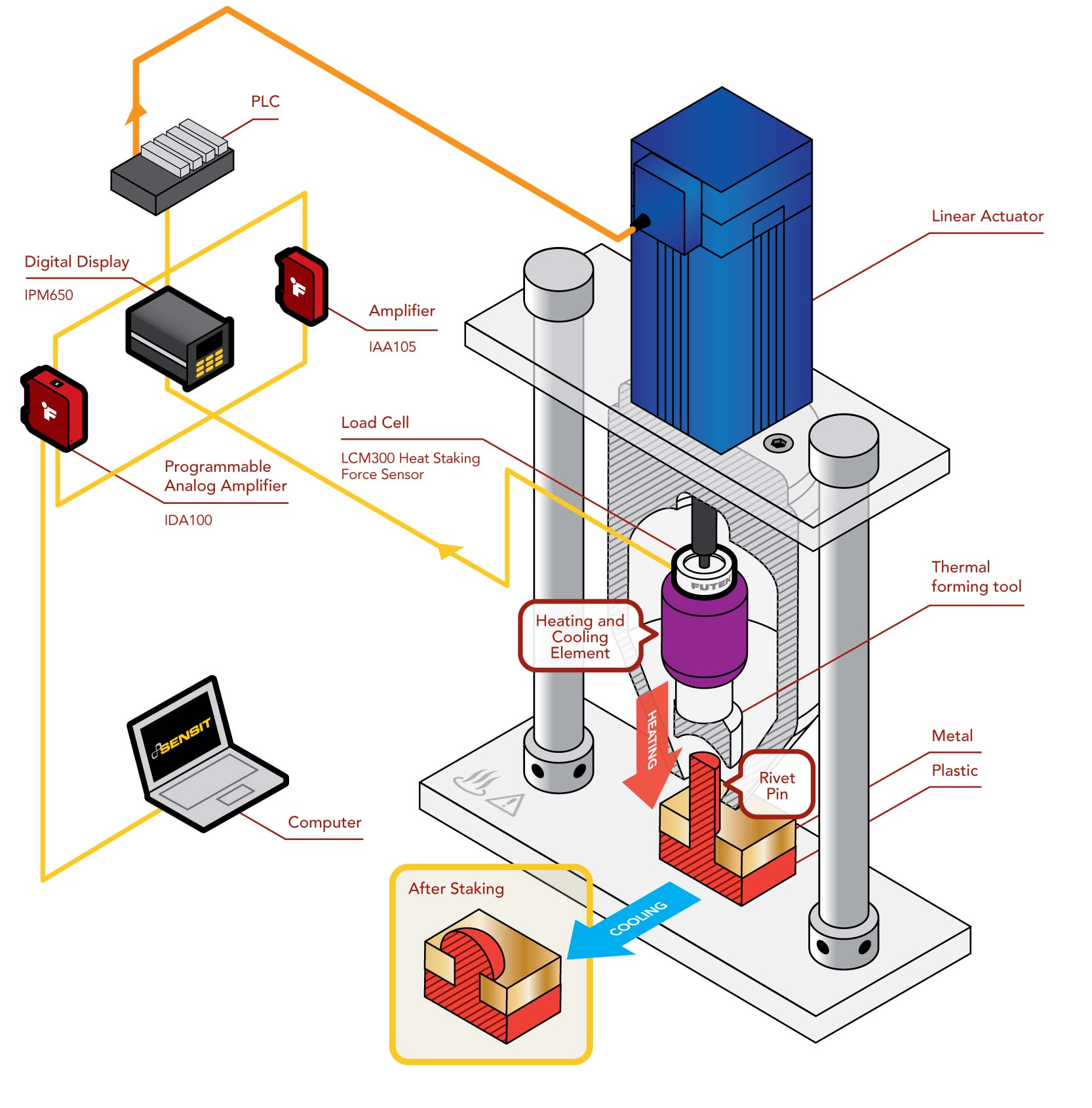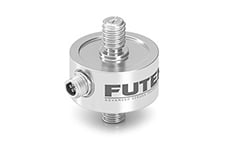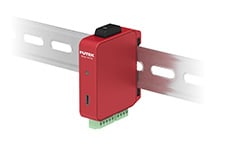What is Heat Staking process in Manufacturing?
Heat staking is a manufacturing process that involves the use of heat to create a mechanical bond between two dissimilar materials together. The process involves the application of heat to a stake, which is a protrusion on one of the parts, which is then pressed into a receiving hole on the other part. The heat causes the stake to melt and flow into the receiving hole, creating a strong mechanical bond between the two parts.
There are several different methods that can be used to heat the stake, including resistance heating, infrared heating, and hot air heating. The specific method used will depend on the material of the parts being joined, the size and shape of the parts, and the production volume.
Heat staking is often used in the manufacture of automotive, medical, and electronics components, as well as a variety of other plastic products. It is a fast and reliable method of bonding plastic parts, and can be used to join parts with high accuracy and repeatability.
Why is it important to monitor the heat staking pressure force during the heat staking process?
Heat staking is a process that involves applying heat and pressure to plastic parts to create a permanent joint. The pressure force applied during the process is important because it helps to ensure that the joint is strong and reliable. If the pressure is too low, the joint may not be fully formed, which can lead to weakness or failure. On the other hand, if the pressure is too high, it can cause the plastic to deform or even break. Therefore, it is important to monitor the pressure force via a process closed loop force control to ensure that it is within the optimal range for creating a strong and reliable joint.
How Load Cells can be used to monitor the pressure in the heat staking process?
Load Cells can be used to monitor heat staking pressure in the heat staking process by being integrated into the staking tool or fixture (placed between the heat staking tool and the workpiece). The load cell will measure the force being applied to the workpiece and provide a reading of the staking force or pressure. This in-process inspection information can then be used by the automation system which can then adjust the staking process in real-time to ensure that the force being applied is within the desired range for creating a strong and reliable joint. This help reduces variations in the staking process, leading to fewer defective parts and less scrap.
Additionally, load cells can be used to monitor the quality of the staked joint over time, allowing the automation system to identify any potential issues or problems before they lead to increased scrap rates. This can be particularly useful in high-volume production environments where even small increases in scrap rates can have a significant impact on costs and efficiency.
During to its higher precision and reliability, FUTEK recommends using strain gauge load cells for heat staking pressure measurement. Each type of load cell has its own advantages and disadvantages, so it is important consult with FUTEK Sales Engineering team to help you to choose the force measurement solution that is most suitable for the specific heat staking application.
How it Works
Though LCM300 is used in the illustration, our Sales Engineers will help you select the appropriate load cell for your application. Factors such as the maximum expected load, the required accuracy and resolution of the measurement, and the physical constraints of the heat stake machine should be considered.
Install LCM300 in the heat stake machine. This typically involves mounting the load cell at the point where the pressure is to be measured, such as on the thermal forming tool or clamping mechanism that holds the workpiece in place.
Connect the load cell to a load cell amplifier or signal conditioner. This device converts the low-level mV/V analog output of the load cell into a more usable form, such as a standard electrical current (4-20 mA) or voltage (0-10 VDC). FUTEK IPM650 Panel Mount Display or FUTEK signal conditioners IDA100 or IAA105 can be used.
Use a data acquisition system to read the output of the load cell amplifier and display on a PC or record the pressure measurement. This can be achieved by using our SENSIT force measurement software.
Contact Us
Please Contact Us with questions.
What is Heat Staking process in Manufacturing?
Heat staking is a manufacturing process that involves the use of heat to create a mechanical bond between two dissimilar materials together. The process involves the application of heat to a stake, which is a protrusion on one of the parts, which is then pressed into a receiving hole on the other part. The heat causes the stake to melt and flow into the receiving hole, creating a strong mechanical bond between the two parts.
There are several different methods that can be used to heat the stake, including resistance heating, infrared heating, and hot air heating. The specific method used will depend on the material of the parts being joined, the size and shape of the parts, and the production volume.
Heat staking is often used in the manufacture of automotive, medical, and electronics components, as well as a variety of other plastic products. It is a fast and reliable method of bonding plastic parts, and can be used to join parts with high accuracy and repeatability.
Why is it important to monitor the heat staking pressure force during the heat staking process?
Heat staking is a process that involves applying heat and pressure to plastic parts to create a permanent joint. The pressure force applied during the process is important because it helps to ensure that the joint is strong and reliable. If the pressure is too low, the joint may not be fully formed, which can lead to weakness or failure. On the other hand, if the pressure is too high, it can cause the plastic to deform or even break. Therefore, it is important to monitor the pressure force via a process closed loop force control to ensure that it is within the optimal range for creating a strong and reliable joint.
How Load Cells can be used to monitor the pressure in the heat staking process?
Load Cells can be used to monitor heat staking pressure in the heat staking process by being integrated into the staking tool or fixture (placed between the heat staking tool and the workpiece). The load cell will measure the force being applied to the workpiece and provide a reading of the staking force or pressure. This in-process inspection information can then be used by the automation system which can then adjust the staking process in real-time to ensure that the force being applied is within the desired range for creating a strong and reliable joint. This help reduces variations in the staking process, leading to fewer defective parts and less scrap.
Additionally, load cells can be used to monitor the quality of the staked joint over time, allowing the automation system to identify any potential issues or problems before they lead to increased scrap rates. This can be particularly useful in high-volume production environments where even small increases in scrap rates can have a significant impact on costs and efficiency.
During to its higher precision and reliability, FUTEK recommends using strain gauge load cells for heat staking pressure measurement. Each type of load cell has its own advantages and disadvantages, so it is important consult with FUTEK Sales Engineering team to help you to choose the force measurement solution that is most suitable for the specific heat staking application.




